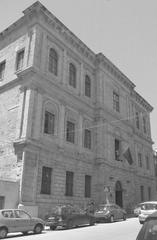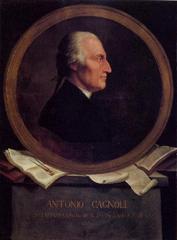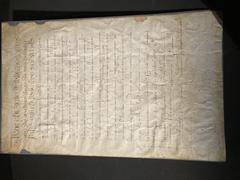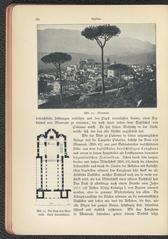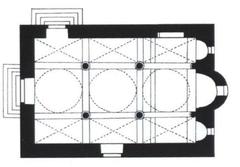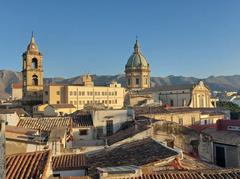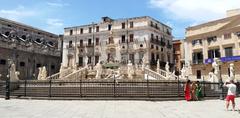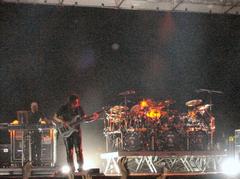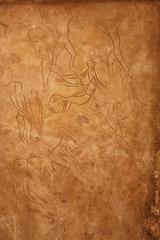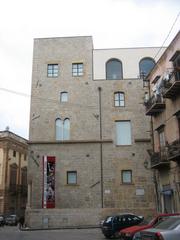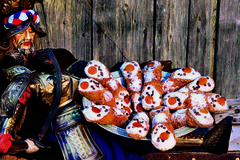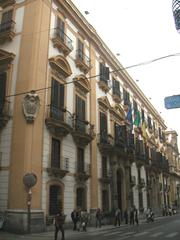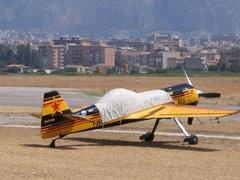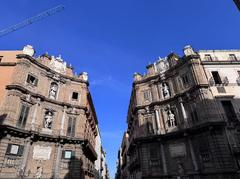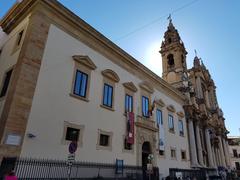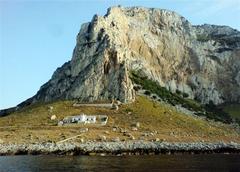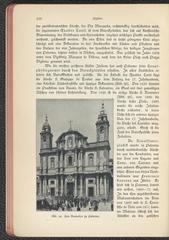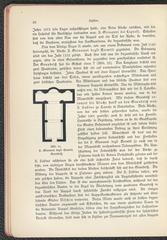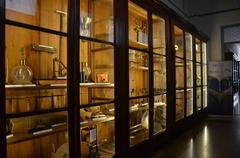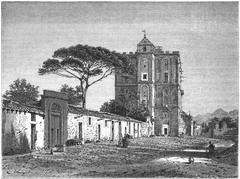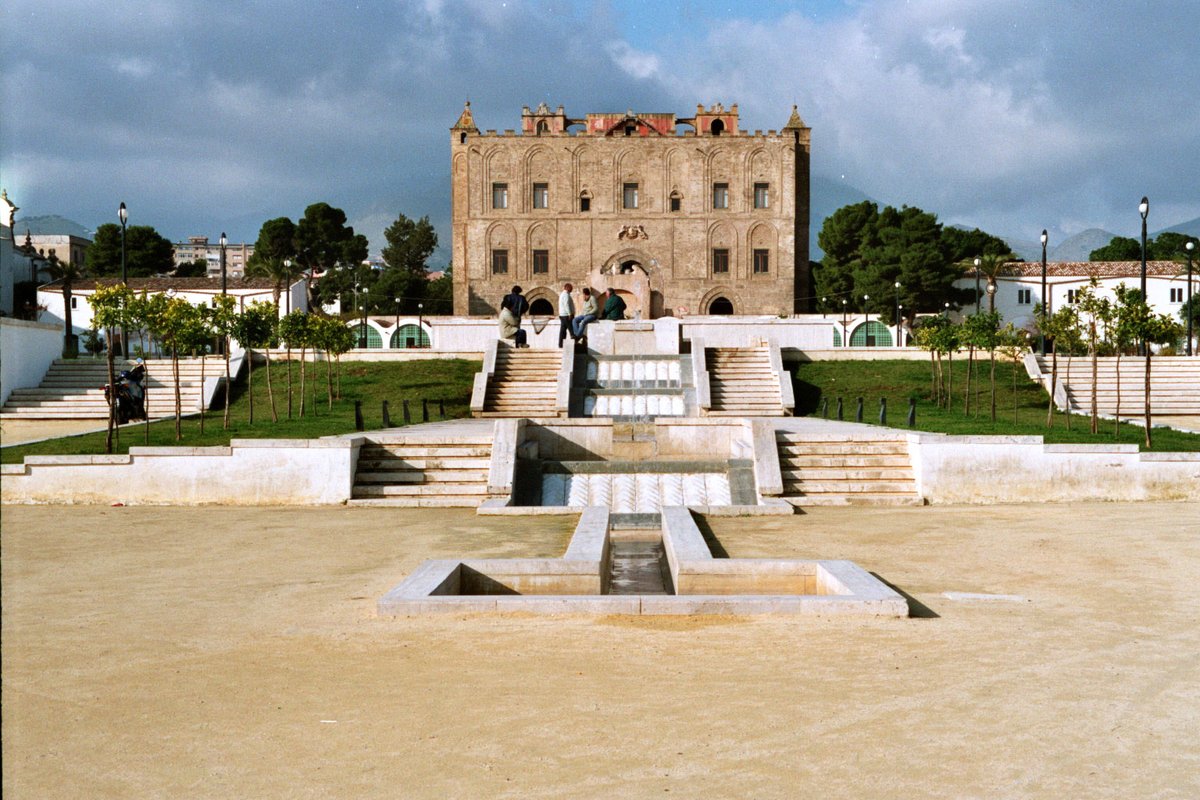
Giardino della Zisa Visiting Hours, Tickets, and Historical Insights
Date: 23/07/2024
Introduction
Nestled in the heart of Palermo, Italy, the Giardino della Zisa is a captivating testament to the city’s rich cultural and historical tapestry. This garden, whose name derives from the Arabic word ‘al-Aziz,’ meaning ‘the splendid,’ dates back to the Norman period in the 12th century. It forms an integral part of the larger Zisa Palace complex, constructed between 1165 and 1180 under the reign of King William I and his son, William II (Palermo Tourism). The garden’s design is a unique blend of Norman and Arab architectural styles, reflecting the harmonious coexistence of these cultures during Sicily’s medieval era. Recognized as a UNESCO World Heritage Site, Giardino della Zisa is a living testament to the island’s diverse history (UNESCO). This guide aims to provide a comprehensive overview of Giardino della Zisa, including its historical significance, architectural marvels, visitor information, and travel tips to enhance your visit to this splendid garden.
Table of Contents
- Origins and Early History
- Architectural and Cultural Influences
- The Garden’s Evolution Through the Centuries
- Decline and Restoration
- Modern-Day Significance
- Key Features and Attractions
- Visitor Information
- Travel Tips and Nearby Attractions
- FAQ
Exploring Giardino della Zisa - History, Visiting Hours, and Travel Tips
Origins and Early History
The Giardino della Zisa, located in Palermo, Italy, is an integral part of the city’s rich historical tapestry. The garden’s origins can be traced back to the Norman period in the 12th century when the Normans ruled Sicily. The name “Zisa” is derived from the Arabic word “al-Aziz,” meaning “the splendid,” reflecting the influence of Arab-Norman culture in Sicily during this period. The garden was part of the larger Zisa Palace complex, which was constructed between 1165 and 1180 under the reign of King William I and his son, William II. The palace and its gardens were designed to emulate the luxurious palaces and gardens of the Arab world, particularly those in the Islamic regions of North Africa and the Middle East (Palermo Tourism).
Architectural and Cultural Influences
The design of Giardino della Zisa showcases a blend of Norman and Arab architectural styles, a hallmark of the Arab-Norman Palermo and the Cathedral Churches of Cefalù and Monreale, which are recognized as UNESCO World Heritage Sites. The garden’s layout and features were heavily influenced by Islamic garden design principles, which emphasized symmetry, water features, and the use of fragrant plants and trees. The central element of the garden was a large rectangular pool, which served both aesthetic and practical purposes, providing a cooling effect in the hot Sicilian climate (UNESCO).
The Garden’s Evolution Through the Centuries
Over the centuries, Giardino della Zisa underwent several transformations, reflecting the changing tastes and influences of its various rulers. During the Spanish rule in the 16th and 17th centuries, the garden was modified to include elements of the Renaissance and Baroque styles, which were popular in Europe at the time. These changes included the addition of ornate fountains, statues, and geometrically arranged flower beds. Despite these modifications, the garden retained its original Arab-Norman character, making it a unique example of cultural syncretism (Sicily Heritage).
Decline and Restoration
By the 19th century, Giardino della Zisa had fallen into a state of neglect and disrepair. The garden’s once-lush vegetation had withered, and its water features had become dry and overgrown. However, in the late 20th century, efforts were made to restore the garden to its former glory. The restoration project, which began in the 1990s, aimed to revive the garden’s historical features while also making it accessible to the public. This involved extensive archaeological and architectural research to ensure that the restoration was as accurate and faithful to the original design as possible (Palermo Municipality).
Modern-Day Significance
Today, Giardino della Zisa is not only a popular tourist attraction but also a symbol of Palermo’s rich and diverse cultural heritage. The garden serves as a green oasis in the bustling city, offering visitors a tranquil space to relax and enjoy the beauty of nature. It also hosts various cultural events and activities, including art exhibitions, concerts, and educational programs, which aim to promote an appreciation of the garden’s historical and cultural significance (Visit Sicily).
Key Features and Attractions
Visitors to Giardino della Zisa can explore several key features that highlight its historical and architectural significance. The central pool, which has been meticulously restored, remains a focal point of the garden. Surrounding the pool are pathways lined with fragrant orange and lemon trees, as well as a variety of flowering plants that bloom throughout the year. The garden also features several pavilions and shaded seating areas, which provide a respite from the sun and offer picturesque views of the surrounding landscape (Palermo Guide).
Visitor Information
Visiting Hours: Giardino della Zisa is open daily from 9:00 AM to 6:00 PM. Visiting hours may vary depending on the season, so it is advisable to check the official website or contact the garden administration for the most up-to-date information.
Tickets: Entrance to the garden is free, but there may be a fee for guided tours or special events. It is recommended to book tickets in advance if you plan to join a guided tour.
Accessibility: The garden is accessible to visitors with disabilities, with paved pathways and ramps available throughout the premises.
Travel Tips and Nearby Attractions
For those planning a visit to Giardino della Zisa, it is recommended to allocate at least a couple of hours to fully explore the garden and its surroundings. The best time to visit is during the spring and early summer months when the garden is in full bloom, and the weather is pleasant. Visitors should also consider taking a guided tour to gain deeper insights into the garden’s history and significance. Additionally, it is advisable to wear comfortable walking shoes and bring a hat and sunscreen, as the Sicilian sun can be quite intense (Travel Palermo).
While in Palermo, consider visiting other historical sites such as the Palermo Cathedral, the Norman Palace, and the Catacombs of the Capuchins. These attractions offer a deeper understanding of the city’s rich history and cultural heritage.
FAQ
What are the visiting hours for Giardino della Zisa?
Giardino della Zisa is open daily from 9:00 AM to 6:00 PM. Visiting hours may vary depending on the season, so it is advisable to check the official website or contact the garden administration for the most up-to-date information.
How much are tickets for Giardino della Zisa?
Entrance to the garden is free, but there may be a fee for guided tours or special events. It is recommended to book tickets in advance if you plan to join a guided tour.
Is Giardino della Zisa accessible to visitors with disabilities?
Yes, the garden is accessible to visitors with disabilities, with paved pathways and ramps available throughout the premises.
Conclusion
Giardino della Zisa stands as a testament to the rich cultural and historical heritage of Palermo. Its unique blend of Arab-Norman architecture and design, coupled with its lush vegetation and tranquil ambiance, make it a must-visit destination for anyone interested in exploring the historical and cultural treasures of Sicily. Through ongoing preservation efforts, the garden continues to enchant and inspire visitors from around the world, ensuring that its legacy endures for future generations to appreciate and enjoy (Sicily Tourism).
References
- Palermo Tourism. (n.d.). Exploring Giardino della Zisa - History, Visiting Hours, and Travel Tips. Retrieved from Palermo Tourism
- UNESCO. (n.d.). Arab-Norman Palermo and the Cathedral Churches of Cefalù and Monreale. Retrieved from UNESCO
- Sicily Heritage. (n.d.). The Garden’s Evolution Through the Centuries. Retrieved from Sicily Heritage
- Palermo Municipality. (n.d.). Decline and Restoration. Retrieved from Palermo Municipality
- Visit Sicily. (n.d.). Modern-Day Significance. Retrieved from Visit Sicily
- Palermo Guide. (n.d.). Key Features and Attractions. Retrieved from Palermo Guide
- Travel Palermo. (n.d.). Travel Tips and Nearby Attractions. Retrieved from Travel Palermo

